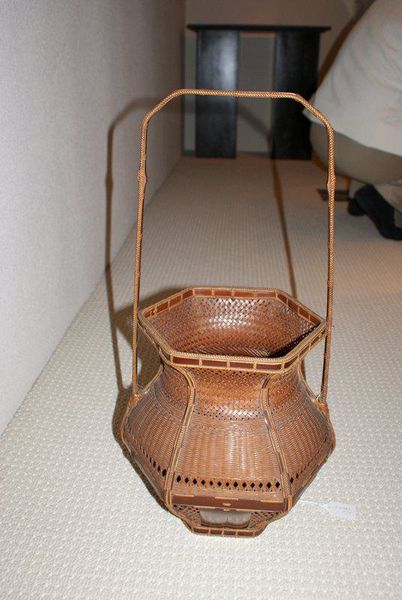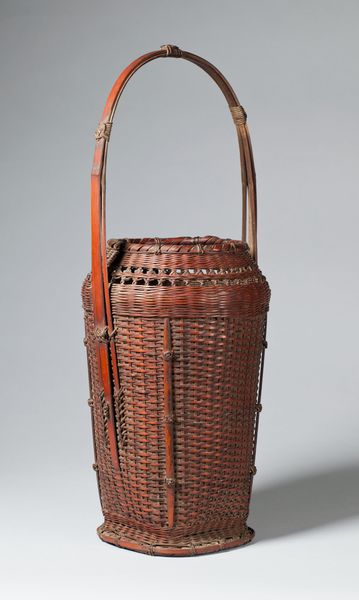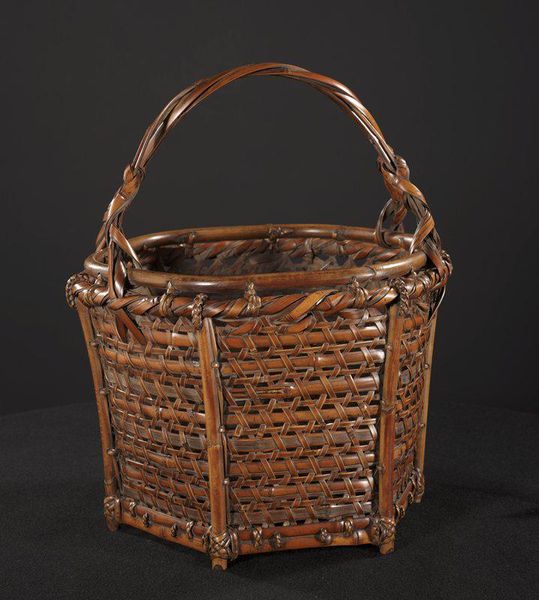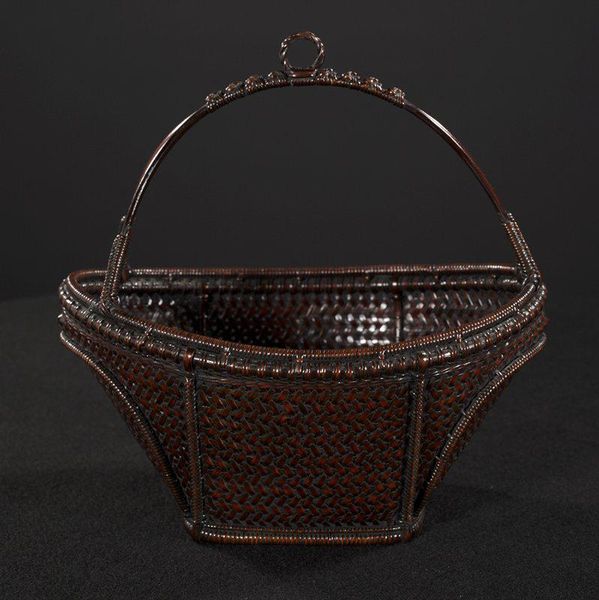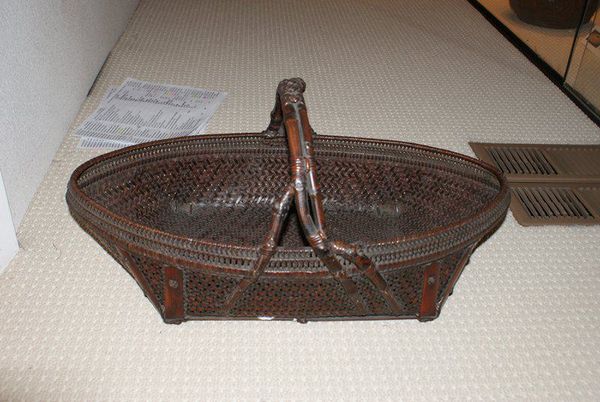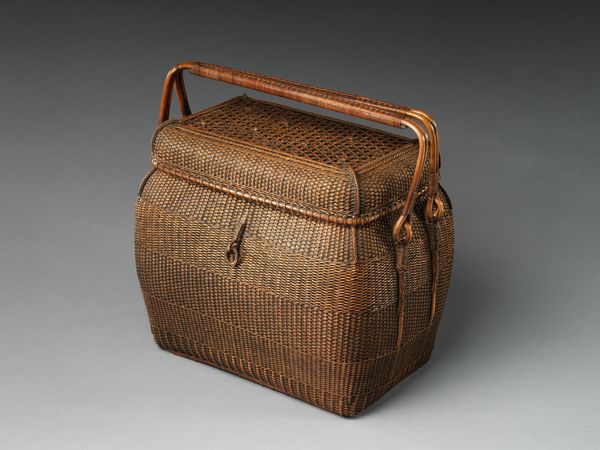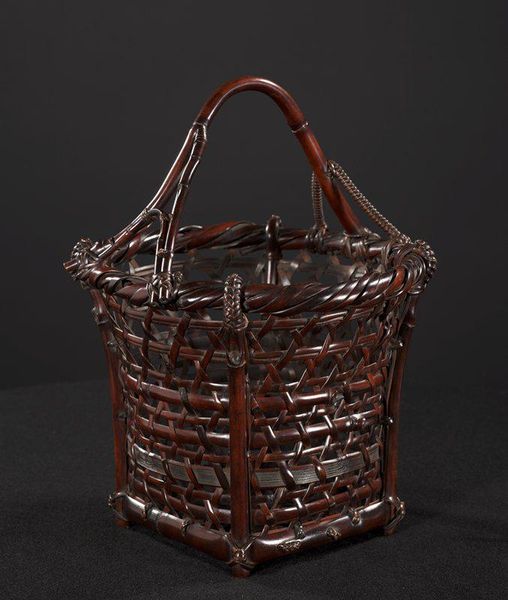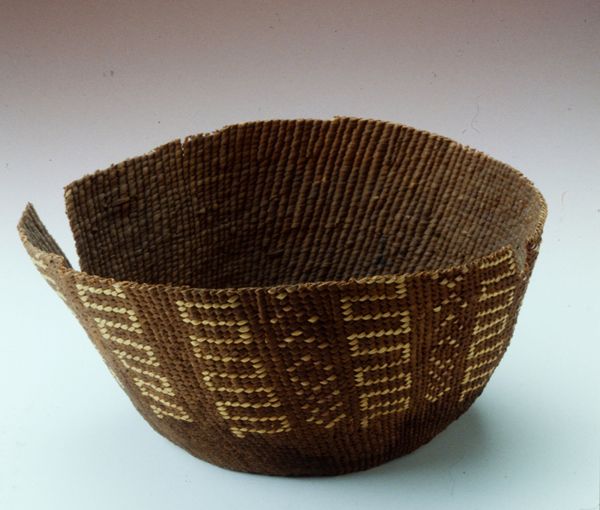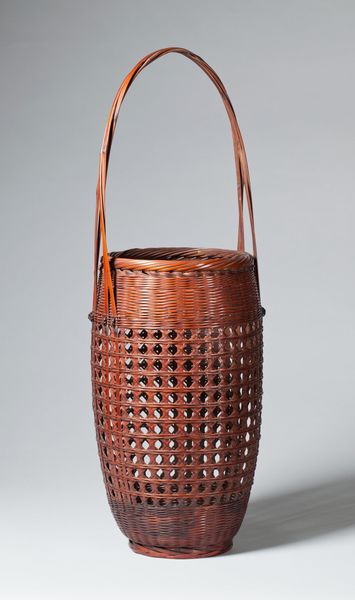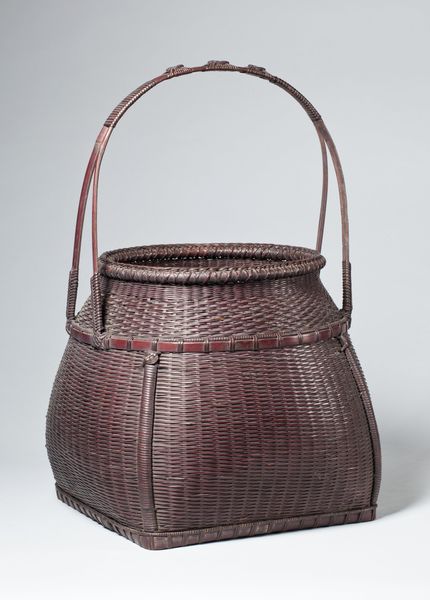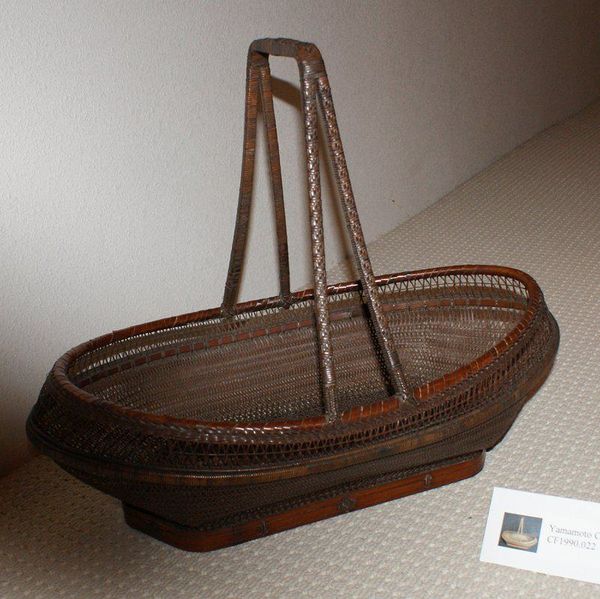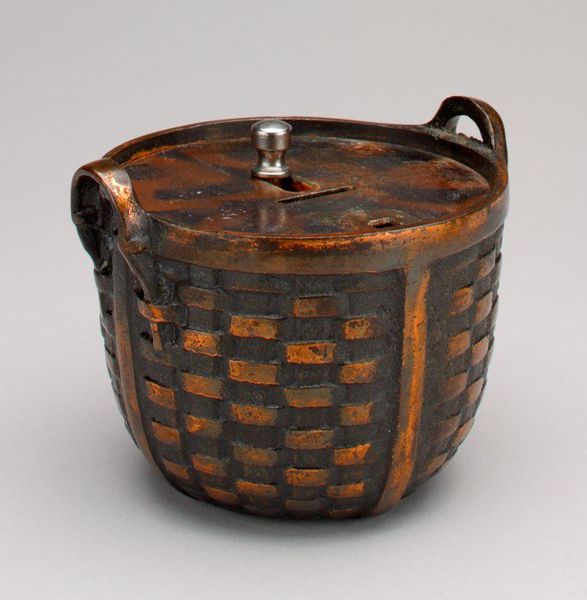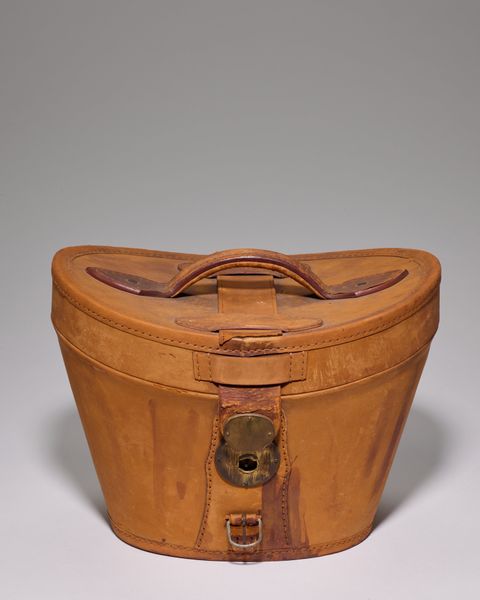
#
asian-art
Dimensions: 9 3/4 × 6 11/16 × 4 7/8 in. (24.77 × 16.99 × 12.38 cm) (handles up)
Copyright: Public Domain
This meticulously crafted basket for tea utensils was fashioned by Hayakawa Shōkosai I in Japan. The tight weave speaks of its purpose: to protect the precious implements of the tea ceremony. Consider the intricate pattern; weaving itself is an ancient art, a testament to human ingenuity across cultures. We find echoes of this technique in the baskets of ancient Egypt, in the textiles of pre-Columbian America, and even in the digital realm of woven code. This pattern isn't merely functional; it's a cultural signifier. The basket is a vessel, much like the mind, which filters experience, transforming it into a textured tapestry of memories. As you gaze upon this humble object, consider the journey of symbols across time. They may appear in new forms, yet their essence remains, resonating with the depths of our collective consciousness.
Comments
minneapolisinstituteofart almost 2 years ago
⋮
Hayakawa Shōkosai I was the leading bamboo artist of the late 1800s. He made this basket to carry the various utensils used for sencha tea service. In contrast to the older Japanese tea ceremony, which uses powdered green tea, the sencha tea ceremony introduced from China in the Edo period (1603–1868) features green tea leaves soaked—or steeped—in hot water. This practice and its association with Chinese culture was especially popular among Japanese scholarly elites of the 1700s and 1800s, who revered artworks, practices, and ideas sourced from Chinese culture.
Join the conversation
Join millions of artists and users on Artera today and experience the ultimate creative platform.
